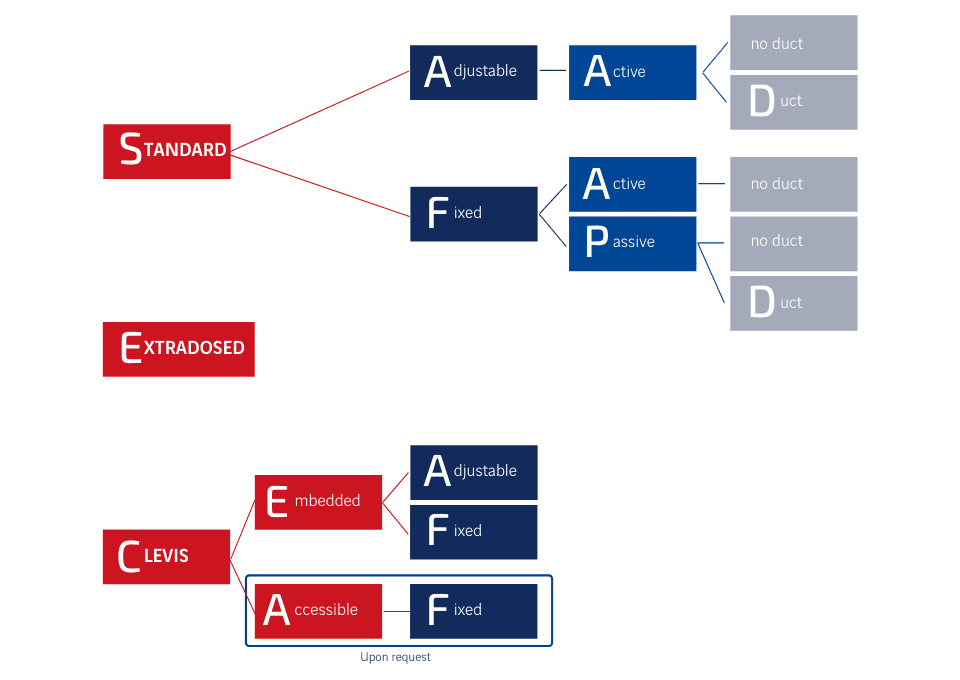
The complete designation of Freyssinet anchorages gives the type of anchor (Standard, Extradosed, Clevis) as well as the useful characteristics for their installation: Adjustable or Fixed, Active or Passive, with or without duct fixing, etc.
As a matter of example, the 37 SFPD 1960 stay anchorage includes the following features:
- Standard anchorage for 37 strands
- 1960 MPa grade steel
- Fixed model
- Passive anchorage
- With Duct fixing


